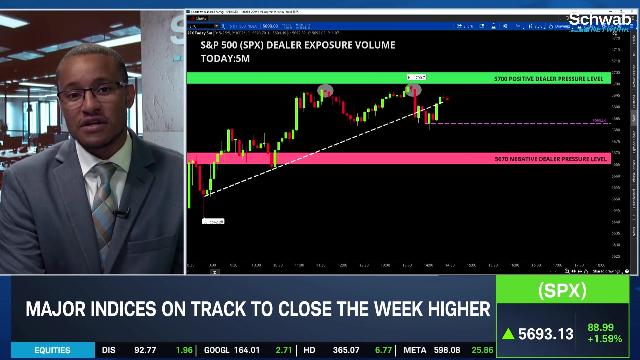- Market Minute
- Posts
- Market Minute: Bulls Want QE Signal from the Fed
Market Minute: Bulls Want QE Signal from the Fed

This week’s Federal Reserve meeting is arguably the most significant event on the economic calendar. Markets have rebounded off the April 7th lows and are now searching for a new catalyst to sustain the rally. Amid a backdrop of soft data — including declining consumer confidence and deteriorating purchasing manager sentiment — the labor market remains resilient, as reflected in last Friday’s employment report. With that mixed economic picture, market bulls are looking for any indication that monetary easing may be on the horizon.
While a near-term interest rate cut remains unlikely, investors are increasingly hoping for a shift in tone — specifically, any reference to quantitative easing (QE) could reignite enthusiasm. Even subtle language suggesting the Fed is prepared to reintroduce QE would likely be viewed as a supportive development for equities and credit markets.
The Federal Reserve has two primary policy tools to ease monetary conditions:
1. Lowering the federal funds rate, which reduces borrowing costs and can stimulate demand.
2. Quantitative easing, which involves purchasing assets like U.S. Treasuries or mortgage-backed securities (MBS) to inject liquidity into the financial system.
In QE operations, the Fed effectively uses their cash to buy assets, thereby increasing the money supply. For instance, if the Fed purchases $1 billion in Treasuries, it provides that amount in cash to the selling institution — often a bank or the U.S. Treasury itself — boosting liquidity directly. Historically, as seen during the COVID-19 crisis, QE has proven to be an effective and quick method to stabilize financial markets and encourage economic activity.
Given recent volatility in the Treasury market and concerns over declining demand for U.S. debt, the Fed may use this meeting to telegraph a readiness to restart QE if conditions warrant it. One potential signal could be a slowdown or even a halt in the current balance sheet runoff — a reversal of quantitative tightening (QT). Such a shift would likely be interpreted by markets as a dovish pivot, even in the absence of a rate cut.
However, challenges remain. The Fed faces a complex environment shaped by lingering inflation pressures and the uncertain effects of newly implemented tariffs. For example, West Coast ports are experiencing a noticeable slowdown in traffic, raising concerns about potential supply chain disruptions and price volatility in key sectors. Inflation remains above the Fed’s 2% target, and despite some cooling, the labor market has not weakened to the point that would justify immediate rate cuts.
According to the CME FedWatch Tool, markets are pricing in a 97% probability that the Fed will hold rates steady at this week’s meeting as of this morning. However, there is still uncertainty around whether a rate cut could materialize by June.
While an official rate cut is unlikely this week, investors are focused on the language and tone of the Fed’s statement. Any hint at a willingness to pause balance sheet reduction or reintroduce QE could be just the boost bulls are looking for. Yet, with inflation still elevated and the full impact of tariffs yet to be seen, the Fed may be reluctant to make such a move. For now, bulls will have to settle for rhetoric — and hope it’s dovish enough to keep the rally alive.
Morning Minute
Featured Clips
Tune in live from 8 a.m. to 5 p.m. ET, or anytime, anywhere, on‑demand.
Or stream it via thinkorswim® and thinkorswim Mobile, available through our broker-dealer affiliate, Charles Schwab & Co., Inc
Please do not reply to this email. Replies are not delivered to Schwab Network. For inquiries or comments, please email [email protected].
See how your information is protected with our privacy statement.
Charles Schwab and all third parties mentioned are separate and unaffiliated, and are not responsible for one another's policies, services or opinions. Schwab Network is brought to you by Charles Schwab Media Productions Company (“CSMPC”). CSMPC is a wholly owned subsidiary of The Charles Schwab Corporation and is not a financial advisor, registered investment advisor, broker-dealer, or futures commission merchant.




